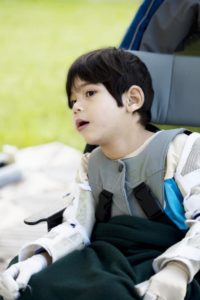According to Health Line, Cerebral Palsy refers to a group of disorders that causes disruptions in muscle movement and coordination. In some cases, abilities such as vision and hearing can also be negatively affected.
Cerebral Palsy is a very common disorder causing motor dysfunctions in children. In fact, it affects around 2 to 3 children out of every 1,000.
Some of the causes of the disorder include lack of oxygen to the brain, severe jaundice, infections like encephalitis and meningitis, bleeding in the brain, etc.
Let’s take a look at some types of Cerebral Palsy:
Spastic Cerebral Palsy
According to the Centers for Disease Control and Prevention, spastic cerebral palsy affects around 80 percent of the people with CP. This type is characterized by stiff muscles, exaggerated reflexes and walking difficulties. Some of the other symptoms include muscle weakness and paralysis. It can affect the entire body or just one part of the body.
Dyskinetic Cerebral Palsy
This type is specifically characterized by uncontrolled body movements. These movements can be involuntary and abnormal. Signs of dyskinetic CP can sometimes also been seen on face and tongue.
The affected person has difficulty in walking, sitting, swallowing and talking.
Hypotonic Cerebral Palsy
 The symptoms of Hypotonic CP appear quite faster. It causes decreased muscle tone or overly relaxed muscles.
The symptoms of Hypotonic CP appear quite faster. It causes decreased muscle tone or overly relaxed muscles.
Children having this type of disorder can act like rag dolls. They do not have control over their heads and might show signs of breathing difficulty. Moreover, they cannot sit up straight and have difficulty in lifting muscles.
Ataxic Cerebral Palsy
This type of CP involves muscle movements that are disorganized or clumsy. The major problem with the affected person is difficulty in maintaining balance and coordination. From tying shoe laces to buttoning a shirt, the problems can vary widely.
Dystonic Cerebral Palsy
This type of CP is characterized by muscular movements that are slow and writhing. There can be variation in muscle tone of the child. For instance, some children might have floppy movements, whereas others might have overly tight or stiff muscles.
Athetoid Cerebral Palsy
This is also a very common type of CP. In this case, the child is doing intellectually fine, but he feels as if he’s trapped inside his body.
Sometimes, the child may experience lack of oral muscles’ control and occasional drooling. This lack of control can also extend towards the whole body.
The unfortunate disorder can sometimes occur as a result of doctor’s negligence. Understanding Cerebral Palsy through and through, New York medical malpractice attorneys at The Fitzgerald Law Firm help victims of the condition gain fair compensation. Over the years, our medical malpractice law firm, based in New York, has achieved some incredible results for our clients.
